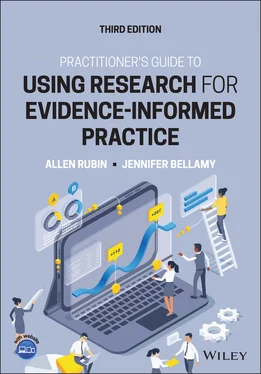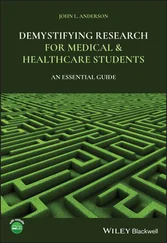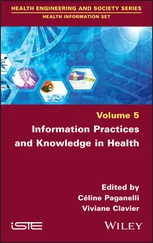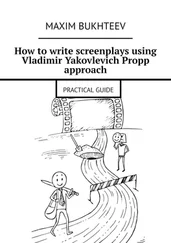The main idea behind this so-called age was the need to evaluate the effectiveness of all human services. It was believed that doing so would help the public learn “what bang it was getting for its buck” and, in turn, lead to discontinued funding for ineffective programs and continued funding for effective ones. Thus, that era was also known as the program evaluation movement . It eventually became apparent, however, that many of the ensuing evaluations lacked credibility due to serious flaws in their research designs and methods – flaws that often stemmed from biases connected to the vested interests of program stakeholders. Nevertheless, many scientifically rigorous evaluations were conducted, and many had encouraging results supporting the effectiveness of certain types of interventions.
In addition to studies supporting the effectiveness of particular intervention modalities, perhaps most encouraging to clinicians were studies that found that one of the most important factors influencing service effectiveness is the quality of the practitioner-client relationship. Some studies even concluded that the quality of practitioners' clinical relationship skills has more influence on treatment outcome than the choices practitioners make about what particular interventions to employ. Although that conclusion continues to be debated, some studies show that practitioner effectiveness is influenced by both the type of intervention employed and certain common relationship factors (Cuijpers et al., 2019; Nathan, 2004).
The accumulation of scientifically rigorous studies showing that some interventions appear to be more effective than others helped spawn the EIP movement. In simple terms, the EIP movement encourages and expects practitioners to make practice decisions – especially about the interventions they provide – in light of the best scientific evidence available. In other words, practitioners might be expected to provide interventions whose effectiveness has been most supported by rigorous research and perhaps to eschew interventions that lack such support – even if it means dropping favored interventions with which they have the most experience and skills.
The preceding paragraph used the words in light of the best scientific evidence, instead of implying that the decisions had to be dictated by that evidence. That distinction is noteworthy because some mistakenly view EIP in an overly simplistic cookbook fashion that seems to disregard practitioner expertise and practitioner understanding of client values and preferences. For example, the forerunner to EIP, EBP was commonly misconstrued to be a cost-cutting tool used by third-party payers that uses a rigid decision-tree approach to making intervention choices irrespective of practitioner judgment. Perhaps you have encountered that view in your own practice (or in your own healthcare) when dealing with managed care companies that have rigid rules about what interventions must be employed as well as the maximum number of sessions that will be reimbursed. If so, you might fervently resent the EBP concept, and who could blame you! Many practitioners share that resentment.
Managed care companies that interpret EBP in such overly simplistic terms can pressure you to do things that your professional expertise leads you to believe are not in your clients' best interests. Moreover, in a seeming disregard for the scientific evidence about the importance of relationship factors and other common factors that influence positive outcomes, managed care companies can foster self-doubt about your own practice effectiveness when you do not mechanically provide the interventions on their list of what they might call “evidence-based practices.” Such doubt can hinder your belief in what you are doing and in turn hinder the more generic relationship factors that can influence client progress as much as the interventions you employ. Another problem with the list approach is its potential to stifle innovations in practice. Limiting interventions to an approved list means that novel practices are less likely to be developed and tested in the field. As you read on, you will find that EIP is a much more expansive and nuanced process than simply choosing an intervention from a list of anointed programs and services.
The foregoing, overly simplistic view of EBP probably emanated from the way it was defined originally in medicine in the 1980s (Barber, 2008; Rosenthal, 2006). Unfortunately, the list or cookbook approach to EBP has probably stuck around because it seemed like a straightforward approach to making good practice decisions. It's much simpler for funders and others to implement and monitor whether practitioners are using an approved intervention than it is to implement and monitor the complexities of the EIP process. For example, one study found that mental health authorities in six states mandated the use of specific children's mental health interventions (Cooper & Aratani, 2009).
Fortunately, the revised definition of EIP – and revised acronym – incorporates practitioner expertise and judgment as well as client values and preferences (Sackett et al., 2000). The more current and widely accepted definition shows that managed care companies or other influential sources are distorting the definition when they interpret it as merely a list of what intervention to use automatically for what diagnosis or problem, regardless of your professional expertise and special understanding of idiosyncratic client characteristics and circumstances.
The current and more comprehensive definition of EIP – one that is more consistent with definitions that are prominent in the current human service professions literature – views EIP as a process, as follows: EIP is a process for making practice decisions in which practitioners integrate the best research evidence available with their practice expertise and with client attributes, values, preferences, and circumstances. In other words, practice decisions should be informed by, and not necessarily based on, research evidence. Thus, opposing EIP essentially means opposing being informed by scientific evidence!
In the EIP process, practitioners locate and appraise credible evidence as an essential part, but not the only basis, for practice decisions. The evidence does not dictate the practice. Practitioner expertise such as knowledge of the local service context, agency capacity, and available resources, as well as experience with the communities and populations served, must be considered. In addition, clients are integral parts of the decision-making process in collaboration with the practitioner. Indeed, it's hard to imagine an intervention that would work if the client refuses to participate!
Moreover, although these decisions often pertain to choosing interventions and how to provide them, they also pertain to practice questions that do not directly address interventions. Practitioners might want to seek evidence to answer many other types of practice questions, as well. For example, they might seek evidence about client needs, what measures to use in assessment and diagnosis, when inpatient treatment or discharge is appropriate, understanding cultural influences on clients, determining whether a child should be placed in foster care, and so on. They might even want to seek evidence about what social justice causes to support. In that connection, there are six broad categories of EIP questions, as follows:
1 What factors best predict desirable or undesirable outcomes?
2 What can I learn about clients, service delivery, and targets of intervention from the experiences of others?
3 What assessment tool should be used?
Читать дальше












